By Dallas Looney
Ever since America’s acquisition of Alaska in 1867, the U.S. Army has had a presence in that territory, much of it remote and largely inaccessible. As a result, the number of troops posted to Alaska remained minimal until the 1930s, when the strategic value of Alaska grew in light of Japan’s expansionist policies in Asia and the Pacific.
Answering this concern, Lieutenant Colonel Henry “Hap” Arnold was ordered to take a flight of B-10B “Flying Whale” bombers to perform reconnaissance and initiate planning for the establishment of an airbase on the Alaskan mainland. On 19 July 1934, Arnold and ten B-10s left Bolling Field in Washington, DC, and flew to Fairbanks, Alaska, and back, a journey totaling 8,290 miles. This impressive flight highlighted the technical prowess of American aviation to the world, while also establishing Fairbanks as a prominent position for a future airbase. In 1939, Congress appropriated the funding for an airbase near Fairbanks and named it Ladd Field after Major Arthur Ladd, an Army Air Corps pilot who perished in a 1935 plane crash in South Carolina.

Amidst growing international turmoil, there was a growing feeling within the United States that the country, especially its overseas territories, could become a target for enemy forces. Construction of Ladd Field was promptly began in 1940, with a distinct focus on becoming a testing ground for cold weather testing. The first station commander of this new Cold Weather Test Station was Major Dale V. Gaffney.
After the attack on Pearl Harbor by the Empire of Japan on 7 December 1941, a growing concern of an attack upon the continental United States sent a surge of coastal defense initiatives into place. Despite this, Ladd Field and the larger Alaskan territory remained free from attack for a number of months. However, Japanese attention turned towards the Aleutian Islands as part of a larger campaign to gain a foothold in U.S. territory.
Two Japanese aircraft carriers launched a bombing raid on the American naval base in Dutch Harbor, as an invasion force landed and occupied the islands of Kiska and Attu in June 1942. With Japanese forces so close by and Dutch Harbor crippled from the bombing raid, the Army turned its attention towards Ladd Field. The base fell under the control of the Eleventh Air Force of the larger Alaskan Defense Command.
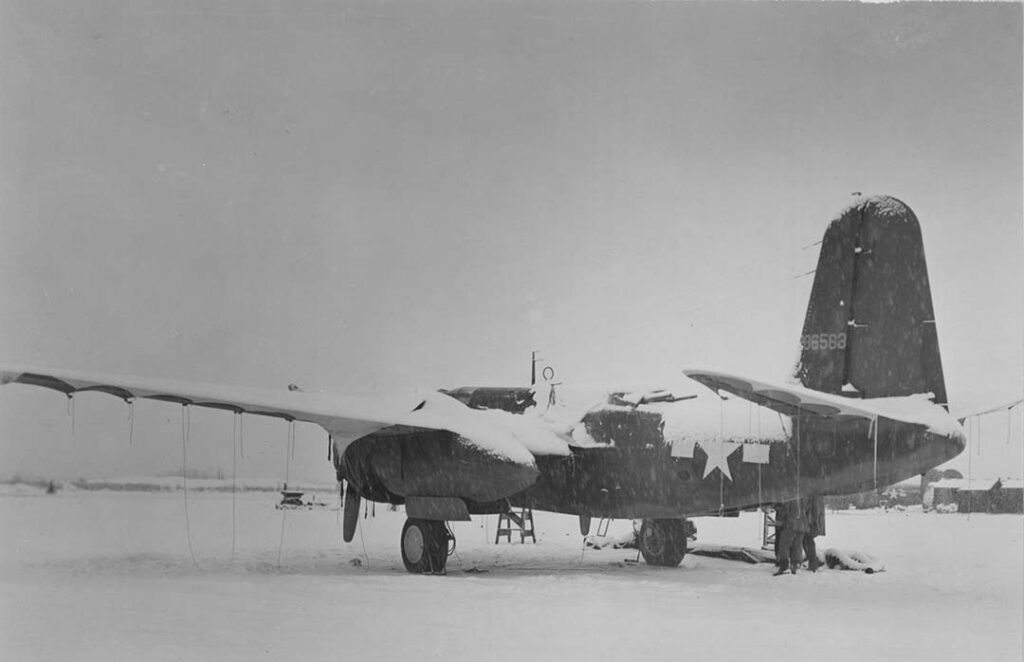
Cold-weather testing at Ladd Field would continue throughout 1942 and resume in earnest later in the war, but the airfield was now host to fighters and bombers operating in the Aleutian Islands campaign to dislodge the Japanese in 1943. Nearly one thousand officers and enlisted personnel now filled the garrison at Ladd Field, while the concrete runway had been nearly doubled in size from its previous 5,000-foot length.
Despite its ongoing role in the Aleutian Campaign, Ladd Field’s primary focus was as part of the “Alsib Movement,” or the Alaska-Siberia Lend-Lease route. Ever since the United States was dragged into World War II, the federal government provided Lend-Lease materiel to its allies overseas. While Britain was supplied across the Atlantic, the Soviet Union and its vast size proved to be something of a challenge. After all, Japan was in a direct location to intercept any potential supplies to the Soviets. As a result, the Army looked towards Ladd Field as a transportation hub for aircraft and supplies to its Soviet ally.
The Soviets had a need for American aircraft as Soviet airpower failed to meet the challenge of the Luftwaffe. While U.S. fighter aircraft at the time were not on-par with Nazi Germany’s BF-109, aircraft like the Bell P-39 Airacobra, Curtiss P-40 Warhawk, and the Bell P-63 Kingcobra could battle German fighters on nearly equal terms. The Soviets were particularly fond of the P-39 because of its maneuverability at low altitudses. Furthermore, the supply of American bomber aircraft, notably B-25 Mitchell and A-20 Havocs, aided the Soviets in many of their counteroffensives early in the war.
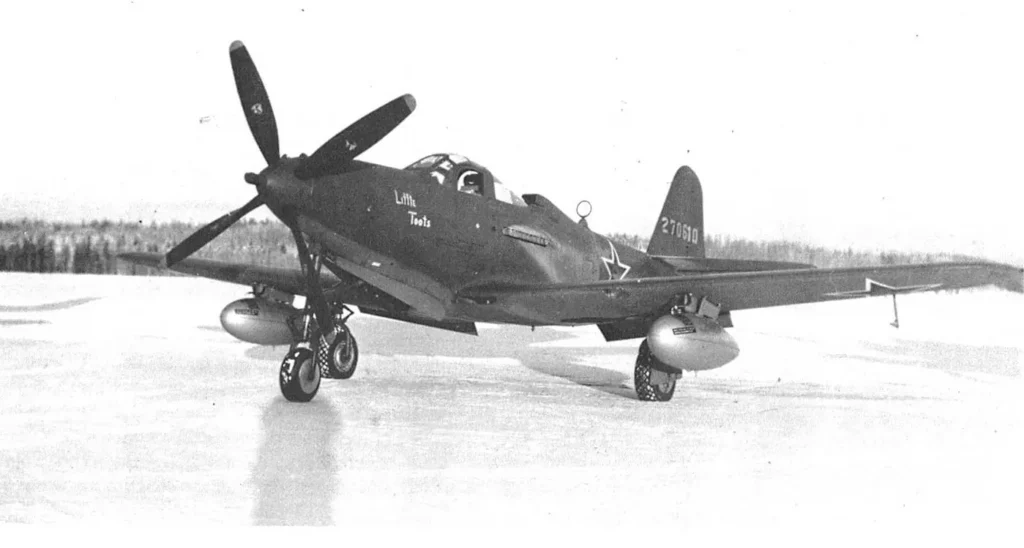
The Soviet Union was at war with Nazi Germany and not with the Empire of Japan like the United States was. As such, Soviet pilots were required to visit Ladd Field under the guise of a diplomatic mission, where they would be trained to fly the Lend-Lease aircraft back to the Soviet Union. Prior to their transit, the U.S. “patriotic” star on the body of American aircraft often had to be painted over with the Soviet red star.
The rest of the war saw Ladd Field, under the Air Transport Command (ATC), undertaking this important task, delivering aircraft and supplies to the Soviet Union through aerial transport over Alaska. The garrison was expanded to include a capacity of 4,500 troops, with housing and facilities constructed to meet the growing need of Lend-Lease deliveries. The expanded garrison included a contingent of Women’s Army Corps personnel in January 1945.
It did not take long for the WACs to get to work, providing much needed support primarily to ATC. While the vast majority worked within the ATC, WACs served a variety of roles on the base, from mechanic jobs to logistics, administrative positions, and medical occupations, with Major Betty Etten Wiker serving as the WAC commanding officer. A large portion of the WACs were assigned to the Army Airways Communication System, highlighting a growing relationship between Alaska and its ability to become an airway junction. WACs also played a role in testing equipment in arctic conditions. Testing aerial technology in cold weather had remained an mission of Ladd Field throughout the war, and with the arrival of WACs, First Lieutenant Christine Woodall was tasked with the creation of the Extreme Temperature Operations Unit. Woodall would later become the first woman to fly in a B-29 Superfortress above the Arctic Circle.
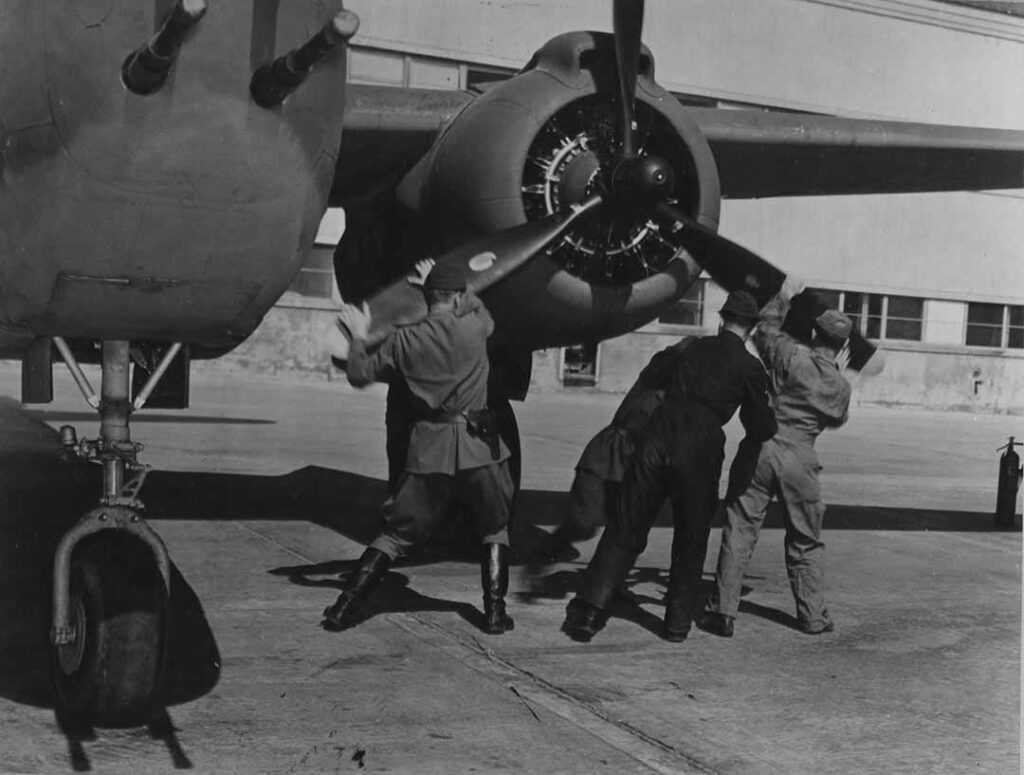
Perhaps most intriguing about Ladd Field involved the opinions of male soldiers on the WACs’ arrival at the time, which was largely positive; the men stationed at Ladd Field welcomed the WACs, with one soldier writing in the post newspaper, The Ladd Field Midnight Sun, “…the gals in the WAC are doing 155 different Army jobs and doing them damn well.” The WACs would serve Ladd Field with distinction as the war came to a close, departing from the airfield in December 1945.
Lend-Lease came to a close in September 1945, with those serving Ladd Field responsible for delivering over 8,000 aircraft to the Soviet Union during the war. Without a pressing need for further deliveries, the command of the airfield was once more given to Eleventh Air Force.
Sadly, the world emerged from one conflict and appeared to be hurtling towards another. Whereas Ladd Field once supplied the Soviet Union with aircraft and supplies, the growing international hostilities between the former allies soon began to change directives at the base. The close proximity of the facility to the Soviet Union and its existing infrastructure from its time serving in World War II made it a natural site for future investment by the Army. With the separation of the Air Force from the Army in 1947, Ladd Field was renamed Ladd Air Force Base (AFB). Furthermore, the newly established Alaska Command became the first unified U.S. command, highlighting the Army’s growing interest in the territory. In 1948, the Army stationed the 2d Infantry Division at Ladd AFB with the intent of supporting the base with ground operations and testing.
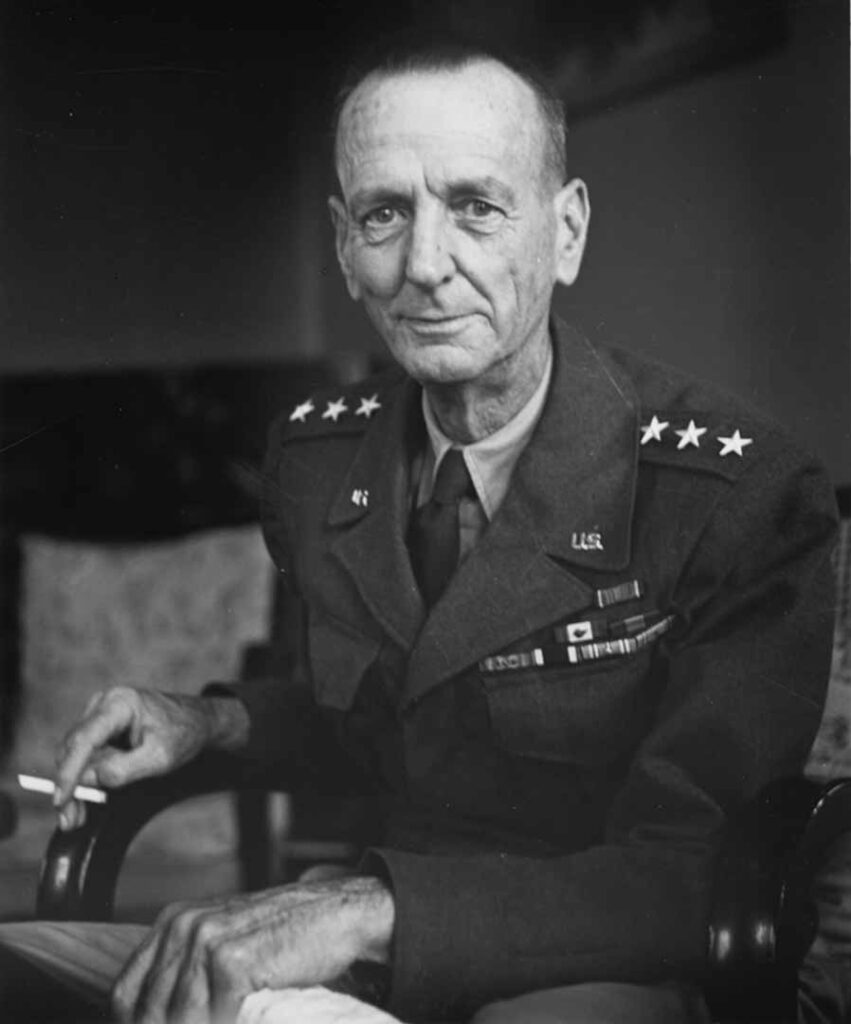
Ladd AFB maintained aerial reconnaissance of the Soviet Union from the borders of Alaska and continued its cold weather testing operations throughout the late 1940s. Ladd AFB became the headquarters for the northern sector of Alaskan Air Command, hosting an Air Defense Command Center to monitor Soviet air traffic. The onset of the Korean War in 1950 and the focus towards cold weather warfare led to further expansion of the cold weather research efforts at Ladd AFB. Air and ground defense remained a mission for Ladd AFB, while polar research and geospatial analysis continued to provide much needed support to the region.
Yukon Command was established at Ladd AFB as a subordinate command of U.S. Army Alaska (USARAL) at the end of the 1950s, with the express mission of providing air defense in northern Alaska. As a result of this focus, antiaircraft artillery (AAA) units comprised a majority of the Army forces on the base. Other Army units at Ladd included the 4th Infantry Regiment (1950-56) and later the 9th Infantry Regiment. The 4th AAA Group was stationed at Ladd AFB throughout the 1950s before being rotated out in 1958.
The late 1950s signified a distinct shift towards a nuclear strategy, as the Air Force began to transfer aircraft and personnel from Ladd AFB to other facilities nearby, most notably Eielson AFB and Elmendorf AFB. In 1959, an AAA battalion equipped with the nuclear-capable Nike Hercules surface-to-air missiles was stationed at Ladd AFB. The Air Force relinquished command of Ladd AFB on 1 January 1961 as the Army resumed control of the post once more and renamed it Fort Wainwright in honor of Medal of Honor recipient General Jonathan M. Wainwright, who commanded American and Filipino forces in the Philippines following the evacuation of General Douglas MacArthur. After he surrendered his forces in May 1942, he spent the rest of war as a prisoner of the Japanese.
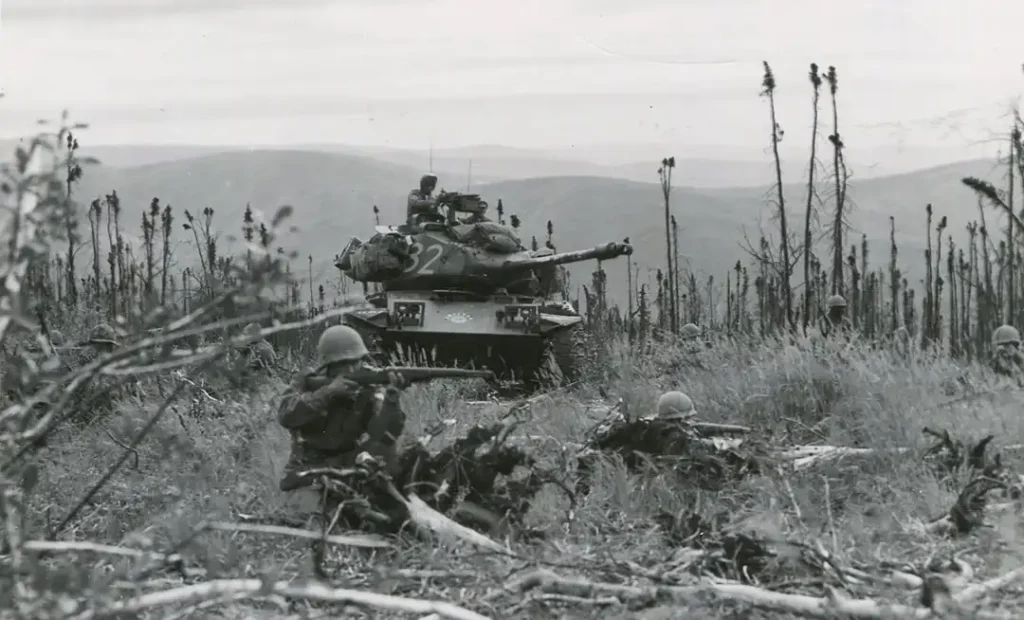
Under the Army’s command, 1st Battle Group, 9th Infantry, and 2d Missile Battalion, 562d Artillery, were assigned to Fort Wainwright and Yukon Command. In 1963, the 171st Infantry Brigade became Yukon Command’s primary combat unit. The 1960s at Fort Wainwright was a period of aviation expansion, a theme that was prevalent throughout much of the Army. The U.S Army Alaska Aviation Battalion, with its subordinate 12th Aviation Company, was activated in April 1961 to provide support and mobility to ground forces operating within Alaska. This aviation support was employed during fire patrols, missile-range sweeps of the previously mentioned Nike missiles, and reconnaissance of the land.
As the Cold War progressed, the importance of Alaska only grew further. It became the beating heart of America’s “first response” due to its close distance to the Soviet Union in the event of a nuclear strike. Nike facilities were constructed within the state, while the airfields maintained a fleet of bombers. Monitoring Soviet activity across the Bering Strait, specific attention was paid towards Soviet activity around the Diomede Islands in the middle of the strait.
The ongoing Vietnam War led elements of the 171st Infantry Brigade (Mechanized) to deploy overseas to Vietnam in 1966. The larger 171st transitioned to a light infantry brigade in 1969 before ultimately being inactivated in 1972. The 1970s was a time of reorganization for the Army, leading to the eventual discontinuation of USARAL in 1974. Furthermore, Fort Richardson took on a more prominent role and siphoned several units away from Fort Wainwright, including the 172d Infantry Brigade.
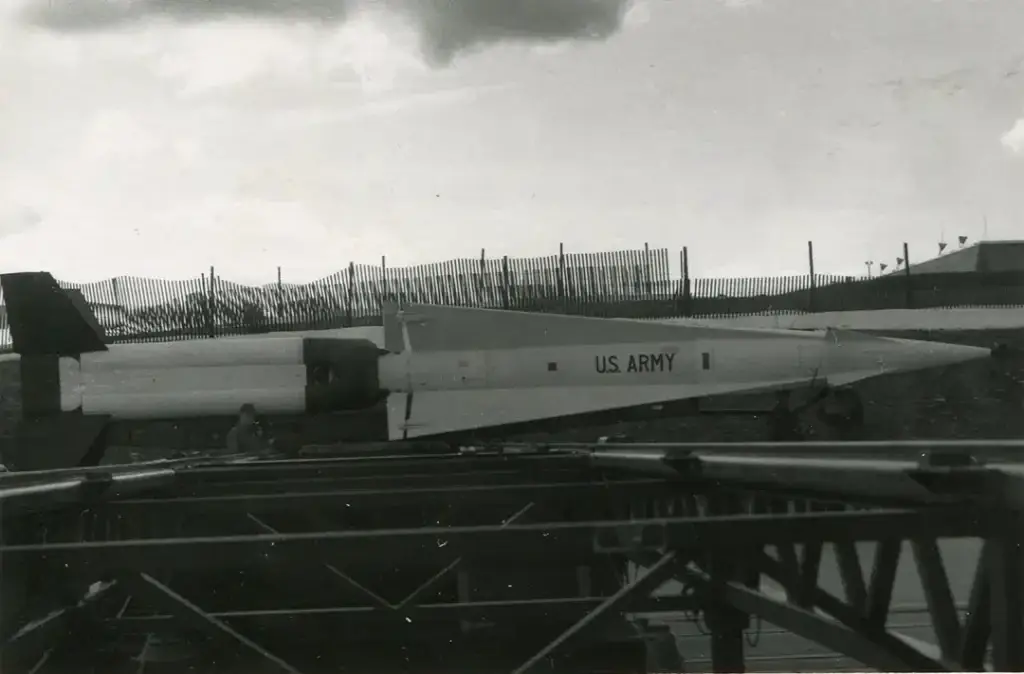
Ladd Field, renamed Ladd Army Airfield when the Army assumed control of Ladd AFB, was named a National Historic Landmark and added to the Registry of Historic Places on 4 February 1985. Further changes in assignments at Fort Wainwright followed, with the 6th Infantry Division (Light) being assigned to Fort Richardson, taking leadership of the Army within Alaska from the 172d Infantry Brigade. Fort Wainwright began to shift away from its regional focus towards a more global approach nearing the end of the 1980s, as the Army looked towards involvement in foreign conflicts once more.
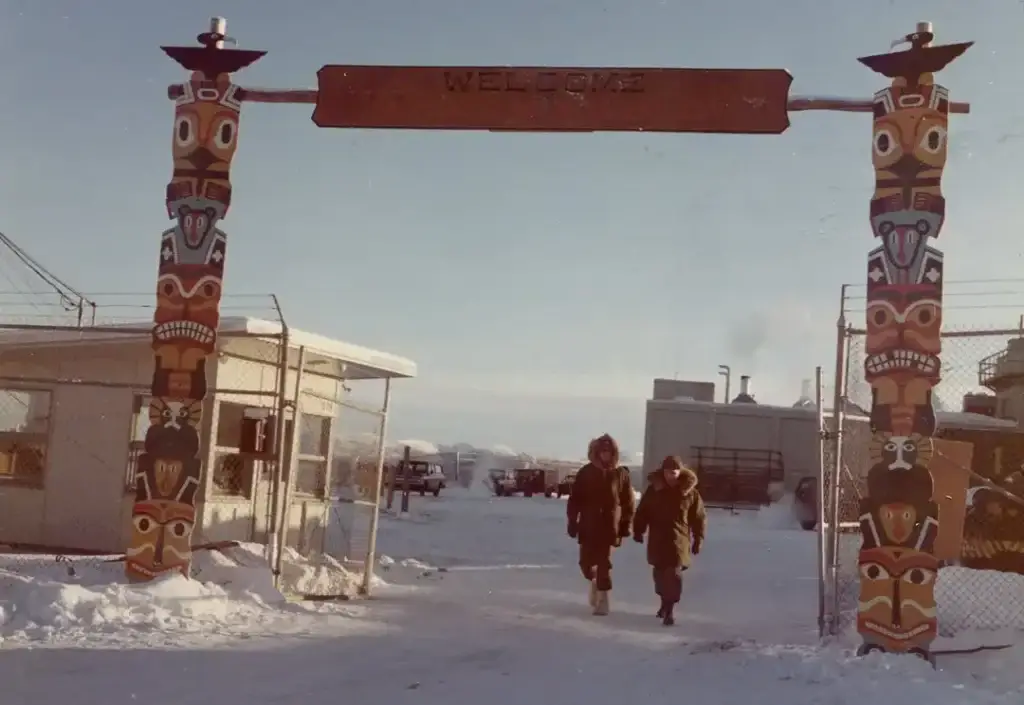
The 1990s for Fort Wainwright followed the larger pattern within the Army, with post-Cold War budget cuts affecting staffing and organization. Despite these cuts, Fort Wainwright became home to U.S. Army Alaska (USARAK) after its activation in 1994, which replaced the existing 6th Infantry Division that commanded Army forces in Alaska. Furthermore, decades of contamination caused the base to be listed on the Environmental Protection Agency (EPA) Superfund sites, leading the Army to begin construction towards a clean-up of the base. This effort would culminate in the Army constructing cleaning facilities in 2002, ensuring that the EPA regulations were carried out.
In more recent years, Fort Wainwright serves as one of many posts stationing modular brigade combat teams, with the most prominent being the 1st Stryker Brigade Combat Team (SBCT), 25th Infantry Division (1-25 SBCT). With the Stryker modular vehicles, the belief was that rapid deployment of the 1-25 SBCT could be a “middle ground” between lightly armed airborne troops and more heavily armored units fielding M1 Abrams tanks and M2/3 Bradley Fighting Vehicles. Those of the 1-25 SBCT served within Iraq beginning in 2004 as the first Stryker brigade combat-deployed to the Middle East. In 2015, 1-25 SBCT participated in Operation ARCTIC PEGASUS, where the first ever deployment of Strykers in arctic conditions took place.
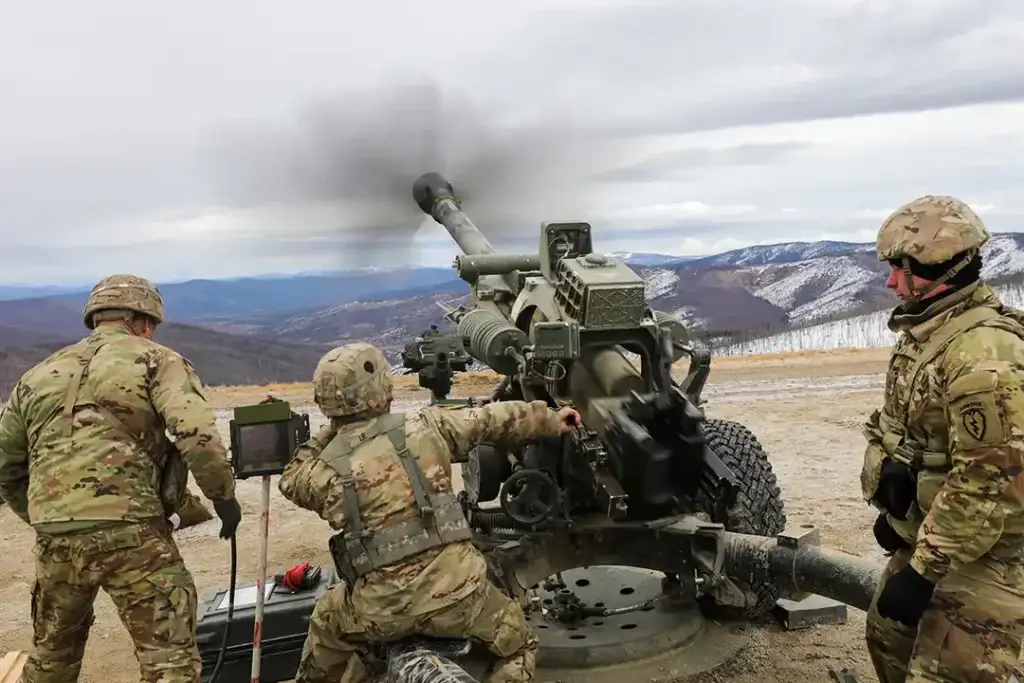
With over 1.6 million acres of stunning Alaskan wilderness, Fort Wainwright continues to be a gem of Alaska’s natural beauty. Beyond the extensive housing improvements and further base development, Wainwright is also home to a generous number of recreational amenities from golfing to snowboarding to camping. The Army maintains a warm relationship with the public, offering them access to these grounds on a seasonal basis through permits. Despite this natural beauty however, the Army has an uphill battle when it comes to soldiers living in Alaska. Excruciatingly long periods of sunlight and darkness, bitterly cold winters, extreme remoteness, and the challenging manipulation of one’s internal clock all contribute to a mental health situation the Army is seeking to resolve with an increase in medical care investment. Despite these challenges however, Fort Wainwright is a powerhouse of Army might, with over 7,700 soldiers posted there.


